Witness an International Space Station (ISS) transit on a rear projection screen .
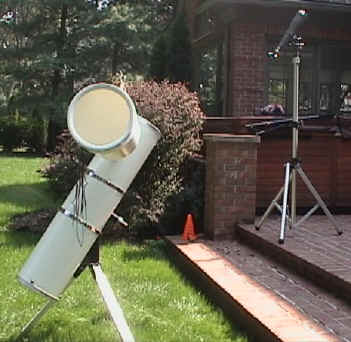
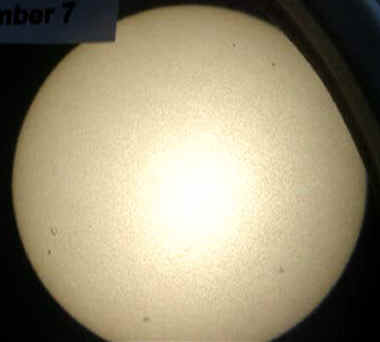
Using a rear projection screen made from inexpensive parts, several people can gather around a telescope and witness a transit of the International Space Station across the sun.
This excerpt from an ISS
Transit Alert indicates a solar transit will occur September 7 at
12:28:41 local time. The centerline is 0.5 miles away from the
home site, but the observer can be up to 1.4 miles away and still see a
chord of the ISS travel across the sun's surface.
|
 The rear projection screen is mounted on the reflector telescope, whose aperture
is stopped down. A white light solar filter is on the smaller refractor
telescope.
The rear projection screen is mounted on the reflector telescope, whose aperture
is stopped down. A white light solar filter is on the smaller refractor
telescope.
 Moments before the scheduled transit, the video camera was ready on a
tripod--except for having charged batteries.
Moments before the scheduled transit, the video camera was ready on a
tripod--except for having charged batteries.
 The regular camera was quickly pressed into service under video mode.
The regular camera was quickly pressed into service under video mode.
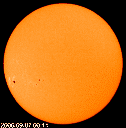 One major
and several minor sunspots were easily visible that day. (SOHO image)
One major
and several minor sunspots were easily visible that day. (SOHO image)
Below are a few shaky frames I grabbed from my hand-held camera in its video mode. Through the projection screen, the shape of the ISS is less defined than when looking through a 60 mm refractor with a solar filter. A friend using the refractor readily described the “wings” of the ISS as if it were a fly moving across the field of view. The view is decidedly better through a scope lens than on a projection screen, but then you’re limited to just one person at the viewer.
The ISS appears in the lower right corner of the sun, about
4:30 on the clock, and moves to the left. The
dot near 6:30 is a large sunspot, while above it is a faint, indistinguishable
sunspot group. The other visible marks are lint and dirt that I did not
remove in time for the transit. In person
the contrast is better than on these low-resolution images.

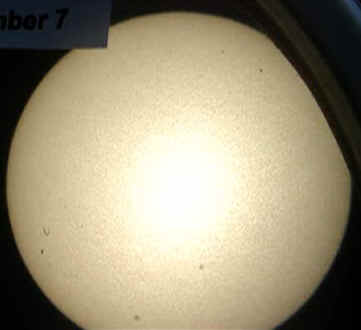
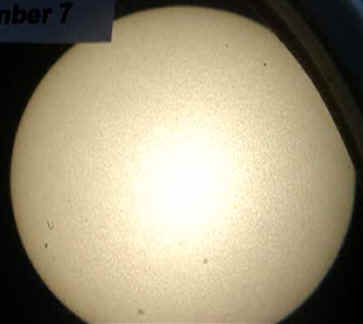
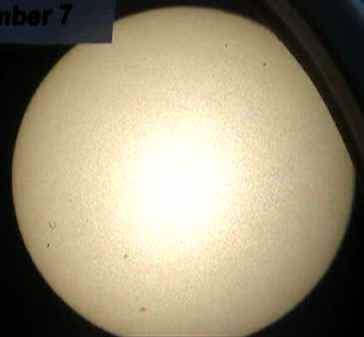
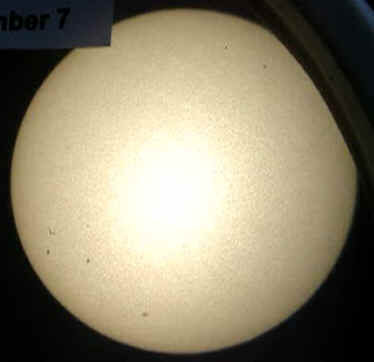
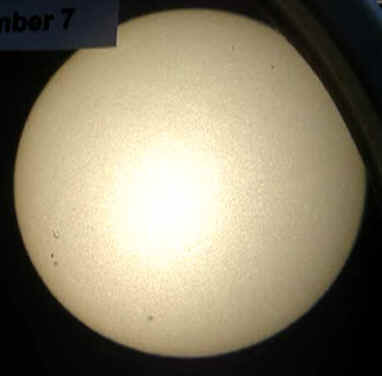
The ISS is the fainter dot below the curled dust on the
lower left edge.
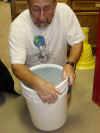 The screen was built at a workshop supported in part
by a PLATO grant. ISS transit predictions are courtesy of Thomas
Fly's ISS Transit Alert Service.
The screen was built at a workshop supported in part
by a PLATO grant. ISS transit predictions are courtesy of Thomas
Fly's ISS Transit Alert Service.
For images and video of ISS
transits see
http://127.0.0.1:4664/cache?event_id=155199&schema_id=2&q=iss+transit&s=2YNe0x8MMHiP3-C1k1VGssxonXw.
Thank you, Don and Mary, for your onsite participation in the September 7, 2006, transit.